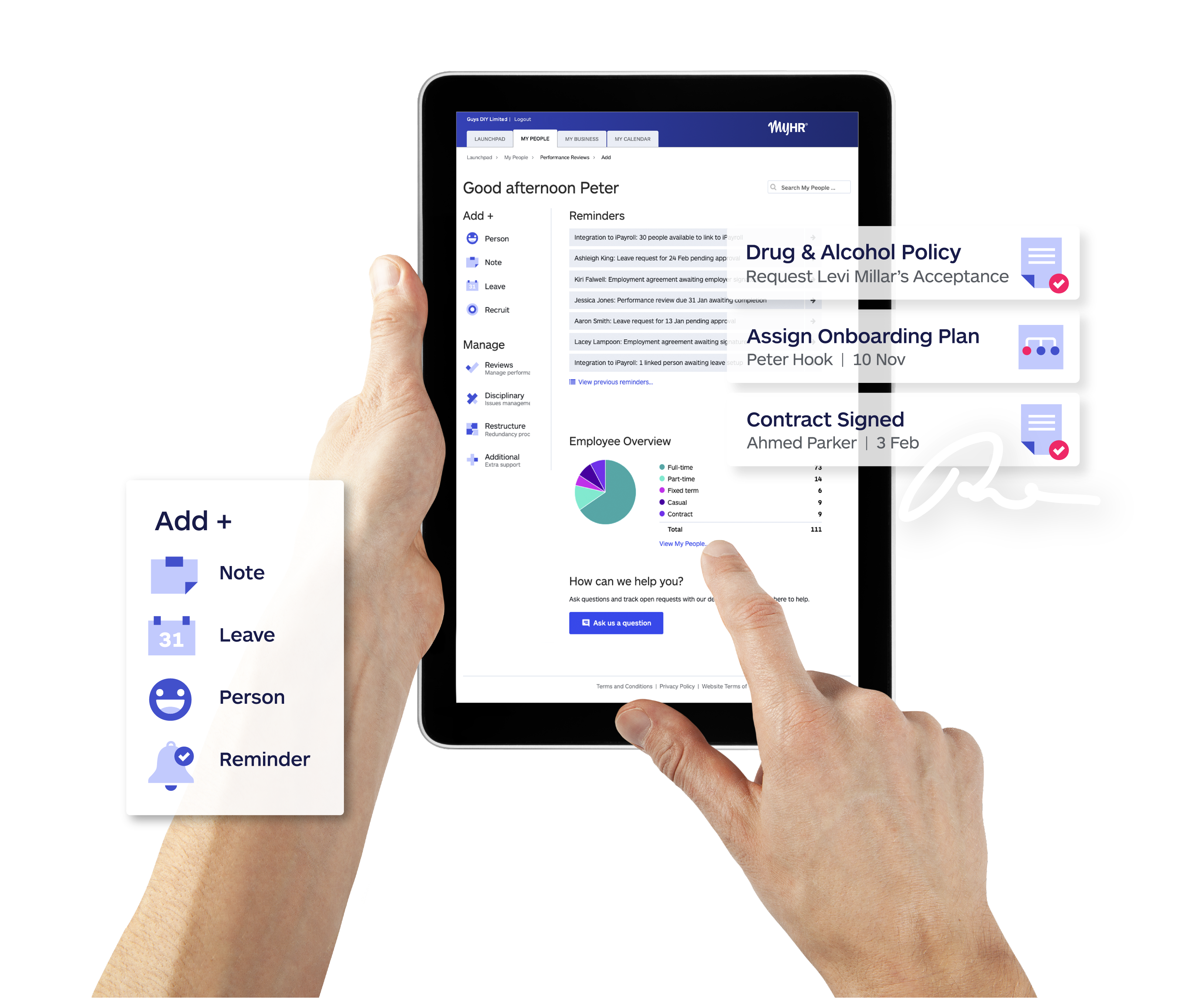
Tracking, guiding, and improving employee performance can take some effort, and in a small to medium-sized business where everyone is busy and focused on completing their daily tasks, it can fall by the wayside. But if your business is going to succeed and your team members thrive, then fostering employee development needs to be made a priority.
This article delves into the key issues around managing and nurturing employee performance, from creating and supporting a high-performing culture to developing talent and setting up effective performance reviews.
We also have a look at what to do when things go wrong and employees don’t meet performance expectations. Managing underperformance is a meaty topic, so we will cover that in more depth in a separate post.
Creating high performing teams
First of all, we need to consider the framework and processes that are in place within the organization to create and support a high-performance environment.
We talk a lot about company culture. And while in some ways it can be an abstract concept, when it comes to employee performance, some well-defined tools and cohesive processes help people work as effectively as possible - both individually and as a team - to achieve business success and add value.
The success of the business is broader than any one person’s performance. It is a combination of ensuring everyone in the organization is clear on their role, the goals of the organization are defined, regular feedback is happening and corrective action is being taken when performance is off track.
Let’s have a look at each of these aspects.
Setting performance expectations for employees early
When we say everyone in the organization should be set up for success, we mean the whole company, from employees to managers and the executive team.
Each employee needs to know what is expected of them, what the responsibilities of their role are, how to be a top performer, and how to align themselves with the company values and culture. Managers and business leaders need to know how to set expectations, how they can support employee success, and model the behavior and attitudes they expect from their team.
Get things right from the beginning of the employment relationship and ensure performance expectations are embedded early.
Start during the recruitment process by identifying the critical aspects of the role, how it contributes to the organization’s goals, and what characteristics other high performers in the business possess, then define how you will measure performance. These factors should underpin each step of the hiring process, from creating the job description to the interview questions, and will help ensure that what you offer candidates matches the reality of the job.
Then comes onboarding, which can take more planning than many employers think, but it sets employees up for lasting success and long-term buy-in. It’s all about making new employees feel welcome and making sure they understand the company culture and systems, their team, and what is expected in the role.
Defining the performance criteria and method of assessment is especially critical if you are hiring someone on a probationary period. Ensuring you check and carefully document their progress in those early days will maximize the chances of success and minimize the risk of the new employee leaving or you having to manage a termination process.
Ensure you schedule regular check-in conversations with the employee and create a forum for providing feedback and coaching. Some managers wait and see how the person adapts to the role before having these conversations, but it’s worth taking a proactive approach here.
Employees need to understand how to communicate with management, and be confident that they can raise issues and that you will be there to guide and support them, even if they make a mistake.
Remember, recruiting, onboarding, and training new employees is one of the most expensive and time-consuming processes for any company, so you don’t want to be ill-prepared or have the wrong processes in place and find you’ve hampered your new employee’s enthusiasm or that they don’t reach the expected performance standards and you have to go through the process all over again.
Find out more about effective recruitment.
Fostering employee development
Another essential part of employee achievement and engagement is the development of their skills and expertise, because what an employee needs to do their job today might not be what they need in 6 or 18 months' time. Businesses are changing rapidly and people’s interests and aspirations also change over time.
Ideally, talent development is something that is planned for and built into the company culture and employment relationship from the outset, based on the organization’s strategy and individual performance and career goals.
Employee upskilling should be an ongoing investment. It should include training and accreditation programs, coaching and mentorship, and opportunities to expand their on-the-job experience, e.g. special project work. Evaluating skill gaps and managing succession planning are also important aspects of ensuring the business can continue to meet its objectives.
Involving employees in designing their development plans helps ensure they have buy-in to what is being proposed and that it aligns as much as possible with their personal and professional development needs.
Reviewing employee performance
Regularly evaluating employee performance keeps the focus on important outcomes and aligns individual performance with company goals, while also providing the opportunity to reward success, utilize potential, identify issues or training needs quickly and accurately, support career development, and improve transparency and communication.
We’ve written a lot about performance reviews and the stigma around them and we know they can be a lengthy administrative process that managers and employees neither enjoy nor understand the purpose of. We’ve also looked at common mistakes in the review process.
But this new generation of employees coming through really appreciate feedback and the opportunity to grow and develop in their role. Effective performance reviews are key to raising job satisfaction and engagement and retaining top talent.
Performance review best practices
There’s no ‘one size fits all’ approach to performance reviews. For most of our clients, we work with them to set performance goals on an annual basis and then have regular two-way discussions, e.g. quarterly, to see how things are tracking.
The thing we stress is not to get too caught up on the actual content of the review. The most important part of the performance review is regular check-in conversations focused not only on current effort, achievement, and areas for improvement but also what’s on the horizon, what skills the business needs to develop, and how you communicate this.
Ensure you are using the review conversation to encourage employees, to think about how they are doing, where they are going, strengths to build on, and any weaknesses or gaps that need to be addressed.
Whatever the performance review system is, it needs to be understood by everyone involved and should be tailored to your organization. That may mean regular check-ins or more infrequent meetings, managers may need training in implementing it, and employees need to be fully involved in setting goals and evaluating their achievements.
For smaller businesses, the process of conducting cohesive performance reviews and constructing training and development plans can seem too onerous, especially if you don’t have people with the time or necessary expertise. That’s where outsourced, expert help and tools can really add value.
Get more more performance review tips.
Start from a performance review template
Using a performance review template can help you maintain consistency across employee’s reviews, and ensure nothing is falling through the cracks. Get our free performance review template, and improve your performance review processes.
Use a performance review software
By leveraging technology during your performance reviews, you can streamline the process and improve outcomes for employees and management alike.
The MyHR platform offers a robust performance review process, right out of the box. Features like automated reminders ensure managers never miss a review cycle with their employees. Our smart notes feature allows managers to add notes against an employee’s file on the fly, to reference down the line and ground conversations with specifics.
When upskilling employees, the MyHR platform allows you to track key activities, perfect for staying on top of development milestones, certifications, or completion of required training. [Learn more about MyHR performance & development features]
Responding to issues
Unfortunately, there are times in any business when people don’t meet expectations, so you need to have clear processes for responding to issues. Dealing with employee underperformance is about identifying problems before they are ingrained or beyond recovery and working with the person to find remedies that enable you to reset expectations and give them a reasonable opportunity to get to where they need to be.
You should also make clear what the consequences of this not happening are, e.g. a more formal performance improvement plan or potentially terminating employment.
Providing ongoing feedback against the clearly outlined expectations often is enough to help the employee gets back on track. If they don’t, you will need to look at ending the employees' employment in a fair and legal way.
Keeping meticulous records of underperformance and attempts made to remedy it is a surefire way of protecting the business from any unjustified dismissal claims associated with terminating employment.




